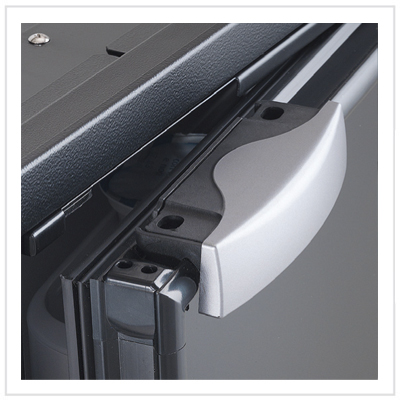Picture this: you’re cruising down the highway on a sweltering summer day when suddenly, your engine temperature gauge starts to climb. Panic sets in as you realize your car is overheating. What could be causing this sudden rise in temperature? It could be an airlock in your cooling system. Don’t worry; this guide will equip you with the knowledge and techniques to fix this common issue and keep your engine running cool.

Image: www.vitrifrigo.com
Understanding Airlocks and Their Impact
An airlock is a pocket of air trapped within your cooling system. It prevents coolant from circulating properly, leading to overheating and potential engine damage. Air can unintentionally enter the cooling system during repairs, maintenance, or even when filling it with coolant. Modern cooling systems typically employ a radiator cap designed to release excess pressure and allow air to escape, minimizing airlock formation. However, older vehicles or those with aftermarket modifications may lack this safety feature, increasing the likelihood of airlock occurrences.
Step-by-Step Airlock Removal
-
Safety First
Safety should be paramount when working on your vehicle. Park on a level surface, engage the parking brake, and allow the engine to cool completely to prevent burns.
-

Image: toolsvirtue.comLocate Bleed Valves
Identify the bleed valves on your cooling system. These are usually found at the highest points in the system, such as the radiator, engine block, or heater core inlet hose. Consult your vehicle’s service manual or online resources to pinpoint their exact locations.
-
Bleed the System
Open the bleed valves one at a time. Keep an eye on the coolant level in the radiator or reservoir and replenish as needed. As air is expelled from the system, coolant will begin to flow out of the bleed valves. Tighten each bleed valve once a steady stream of coolant emerges.
-
Recheck and Repeat
Start the engine and let it run for a few minutes with the heater on high. This will circulate the coolant throughout the system and help remove any remaining air pockets. Recheck the coolant level and bleed valves to ensure no more air remains trapped.
-
Additional Tips for Removing Airlocks
- Some vehicles may have specific bleeding procedures. Refer to your service manual for guidance.
- If you encounter a stubborn airlock, try elevating the front of the car to encourage air movement toward the bleed valves.
- If bleeding the system doesn’t resolve the issue, there may be a more severe problem within the cooling system. Consult a mechanic for further diagnosis and repair.
Burping vs. Bleeding: Understanding the Difference
The terms “burping” and “bleeding” are often used interchangeably, but they refer to slightly different processes in the cooling system maintenance context. Burping involves releasing trapped air from the system by squeezing the radiator hoses while the engine is running. This method is typically employed for vehicles without dedicated bleed valves. Bleeding, on the other hand, utilizes the bleed valves to release air pockets and ensure proper coolant flow. Both techniques aim to eliminate airlocks and optimize cooling system performance.
How To Fix Airlock In Cooling System
Conclusion
Airlocks, while seemingly simple, can have significant consequences for your vehicle’s engine if left unchecked. By understanding how to detect and remove airlocks, you’ll be able to maintain an efficient cooling system and prevent potential breakdowns. The methods outlined in this comprehensive guide provide a step-by-step approach to effectively eliminate air pockets, ensuring your engine operates at optimal temperatures and delivers reliable performance.